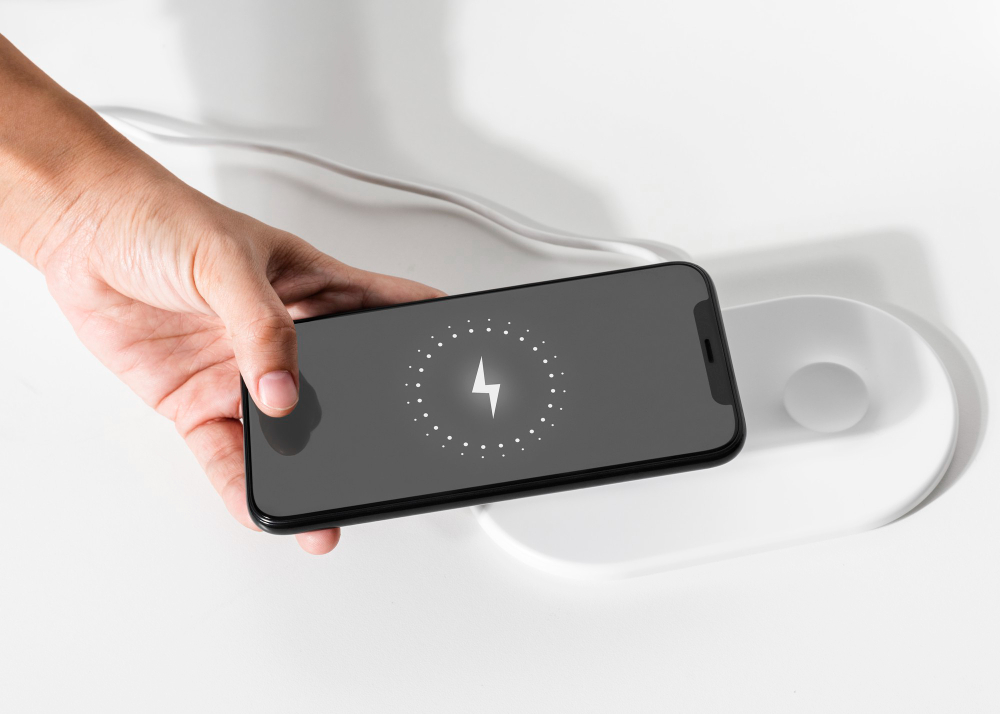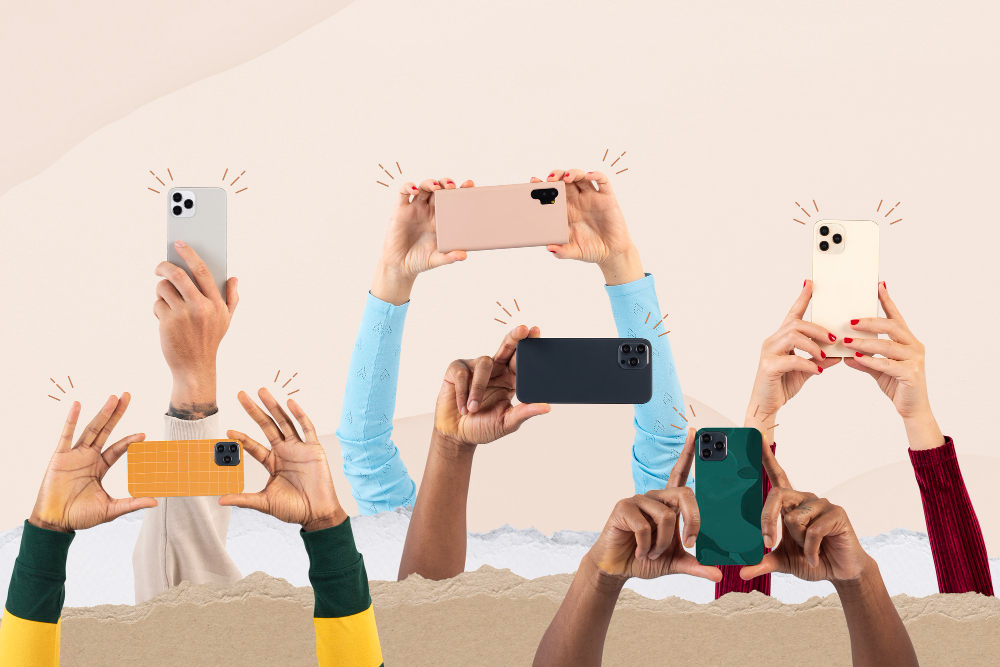MagSafe vs Standard Wireless Chargers – Essential Comparison

When you’re looking at wireless chargers for your smartphone, understanding the difference between standard wireless chargers and the special magnetic style known as MagSafe is key. In this article we’ll explain what standard wireless chargers are, what the MagSafe system is (developed by Apple), and help you decide which wireless charger type is the right choice for your lifestyle. The focus keyword “wireless chargers” will guide us throughout this discussion.
Table of Contents
What are standard wireless chargers?
Standard wireless chargers rely on the open Qi charging standard—an inductive charging method that has been widely used for many years. Wikipedia+2silicon-power.com+2
How they work
A standard wireless charger uses a coil inside the pad or stand and a receiving coil in your phone (or device). When you place your phone on the pad, energy is transferred via electromagnetic induction. One drawback has been alignment — if the coils inside the device and pad aren’t well aligned, charging may be slower or less efficient. PITAKA+1
Compatibility and limitations
Because Qi is an open standard, many phones, earbuds, and other devices support it. However, when used with older or non-optimized chargers, charging speeds may be lower (for example many iPhones with standard Qi pads are limited to 7.5 W). PITAKA+1
Typical charging speeds
With standard Qi wireless chargers you’ll often see charging speeds in the range of 5W to 10W for many devices, though newer devices and better chargers might hit 15W. Anker+1
What is MagSafe wireless charging?
MagSafe is Apple’s magnetic wireless charging system designed for iPhones (starting from the iPhone 12 series) and compatible accessories. Wikipedia+1
The magnetic alignment advantage
The MagSafe system uses a ring of magnets around the charging coil in the iPhone (and in MagSafe-certified chargers) so that the device snaps into ideal position for charging. This improves alignment, reduces wasted energy, and enhances the user experience. PITAKA
Speed and power delivery
For compatible iPhones, Apple’s MagSafe charger can deliver up to 15W of wireless charging (for iPhone 12/13 series) when used with the correct adapter. Apple Support+1 Recent updates push this further: the newer MagSafe/ Qi2 hybrid chargers can deliver up to 25W for supported models. Wikipedia+1
Ecosystem and accessories
MagSafe also allows a wealth of accessories (cases, mounts, wallets) that attach magnetically to the iPhone. While the charging function is the primary interest here, this accessory ecosystem is part of why many users choose MagSafe-compatible chargers.
Key differences between MagSafe and standard wireless chargers
Understanding the differences will help you choose which type of wireless charger is best for you.
Compatibility
- Standard wireless chargers (Qi) work with a broad range of devices—iPhones, Android phones, earbuds, smartwatches—as long as they support Qi.
- MagSafe chargers are optimized for iPhones with MagSafe support. You can place non-MagSafe compatible phones on them, but you often won’t benefit from the magnetic alignment or full charging speed. PITAKA+1
Alignment and ease-of-use
Because MagSafe uses magnets, the phone is properly aligned automatically which improves efficiency and usability. Standard Qi pads may require you to position the phone carefully. MOFT+1
Charging speed
MagSafe chargers typically deliver higher wireless charging speeds (15W and, for newer versions, up to 25W) when used with the right adapter and compatible phone. Standard Qi chargers often top out lower unless they use newer standards like Qi2. Anker+1
Future-proofing and cross-platform
Standard Qi chargers have broad device support (Android and iPhone). MagSafe is more Apple-centred. However, the newer Qi2 standard incorporates the magnetic alignment idea behind MagSafe and is intended to work across devices—making standard wireless chargers using Qi2 a strong future-proof choice. Anker+1
Price and accessory ecosystem
MagSafe-certified chargers and accessories may carry a premium due to branding, design and Apple licensing. Standard wireless chargers can offer good value and wide compatibility.
Which wireless charger type should you choose?
If you use an iPhone (especially newer models)
If you have an iPhone 12 or newer and you want the best experience with magnetic alignment, design aesthetics, and full speed charging, choosing a MagSafe-certified wireless charger makes sense. Especially if you already buy MagSafe accessories.
If you use Android or mixed devices (iPhone + Android)
If you use both Android and iPhone devices, or plan to switch platforms, a standard Qi wireless charger (ideally one supporting Qi2) may be smarter. You’ll have cross-device compatibility and won’t be locked into the Apple ecosystem.
If you want future-proofing
Given the rise of Qi2—which incorporates magnet alignment and higher speed capabilities—selecting a charger that supports Qi2 or is “magnetic-ready” gives you flexibility for future devices. As described by WIRED: “Qi2 enables faster, more efficient magnetic wireless charging … and it’s finally natively available on a major Android phone.” WIRED
Practical usage / environment
- On a nightstand or desk where you frequently place your phone: magnetic alignment (MagSafe or Qi2) improves ease of use.
- Using multiple devices (phone + earbuds + watch) or non-iPhone devices: go for a universal Qi pad or stand that supports multi-device charging.
- Travel or portability: Choose a charger with foldable design or travel-friendly size; compatibility may matter more than brand premium.
How to evaluate wireless chargers before buying
When choosing a wireless charger, use these checklist items:
- Power adapter included? Many chargers require a separate USB-C adapter of sufficient wattage; check if it’s included.
- Supported output? Look for 15W+, or up to 25W if your phone supports it.
- Magnetic alignment or standard? If using iPhone with MagSafe or want easy alignment, choose magnetic.
- Multi-device support? If you have earbuds, watch, phone, pick a charger that supports more than one device.
- Built quality & safety features. Good chargers have foreign-object detection, temperature control, secure build.
- Ecosystem & compatibility. Ensure charger is compatible with your device brand and case (some thick metal cases interfere).
- Your usage scenario. Desk, bedside, travel—choose form-factor accordingly.
At your convenience you can also read our review of more chargers on our site and compare specs side-by-side.
Final thoughts
In the world of wireless chargers, the choice between standard wireless chargers and MagSafe chargers is less about which is “bad” and more about which suits your device ecosystem and usage patterns. If you’re an iPhone user committed to the Apple accessory ecosystem, MagSafe gives excellent alignment, good speeds and a polished experience. If you use Android or multiple devices, or want a more cross-platform solution, then a quality Qi (especially Qi2-ready) charger will give you flexibility and future readiness.
Wireless chargers are no longer a “nice to have” gadget—they’ve matured and now deliver meaningful convenience. By evaluating your phone, usage habits and accessory ecosystem, you’ll pick a wireless charger that serves you well for years to come.
FAQs
Q: Can a MagSafe charger charge an Android phone?
Yes, a MagSafe charger will often charge an Android phone that supports Qi, because MagSafe is built on the Qi base standard. However, you may not get magnetic alignment or full speed unless the Android device supports the MagSafe-style magnetic interface (or Qi2 magnet profile). PITAKA
Q: If my phone only supports standard Qi, is MagSafe worth it?
If your phone only supports standard Qi and doesn’t have magnetic alignment or MagSafe specifications, you will still be able to use a MagSafe charger, but you might not get the full benefits (magnetic snap, full speed). In that case a high-quality standard Qi charger may be a more cost-effective choice.
Q: What is Qi2 and how does it affect my choice between MagSafe and standard wireless chargers?
Qi2 is the next-generation open wireless charging standard that incorporates magnetic alignment (like MagSafe) and higher wireless speed potential. It is designed to bridge the gap between Apple’s MagSafe ecosystem and broader device compatibility. So if you buy a charger with Qi2 support, you gain the magnetic convenience of MagSafe and broad device support of standard Qi. Anker


